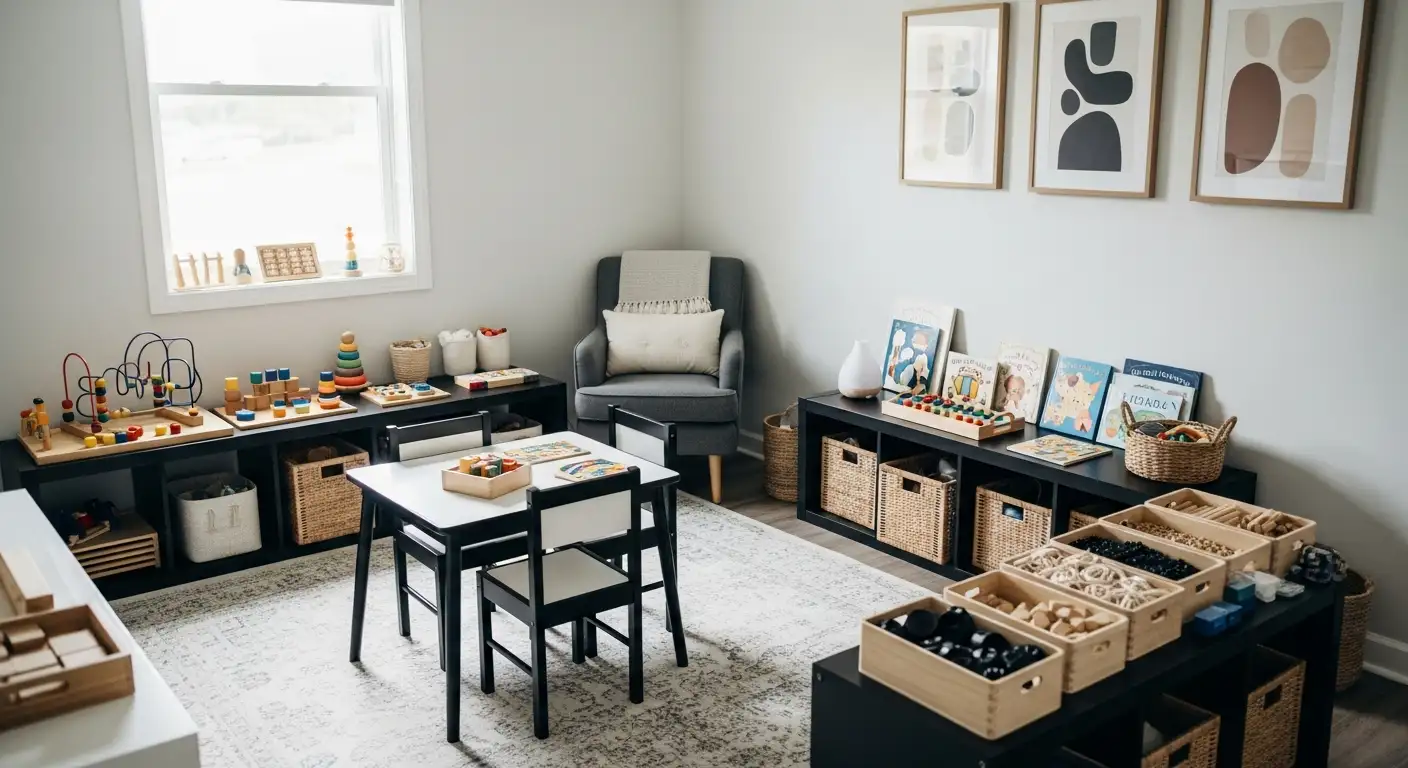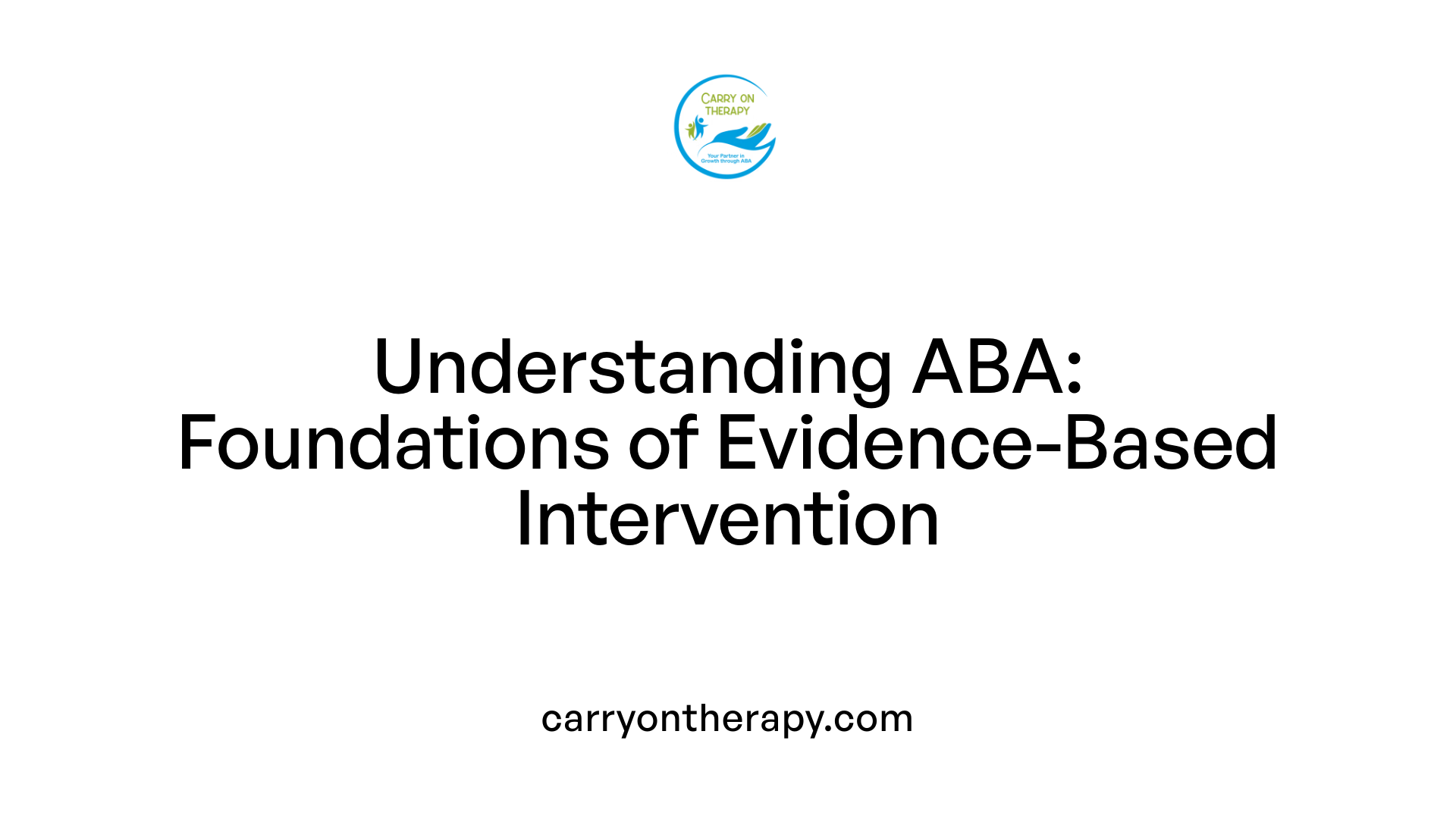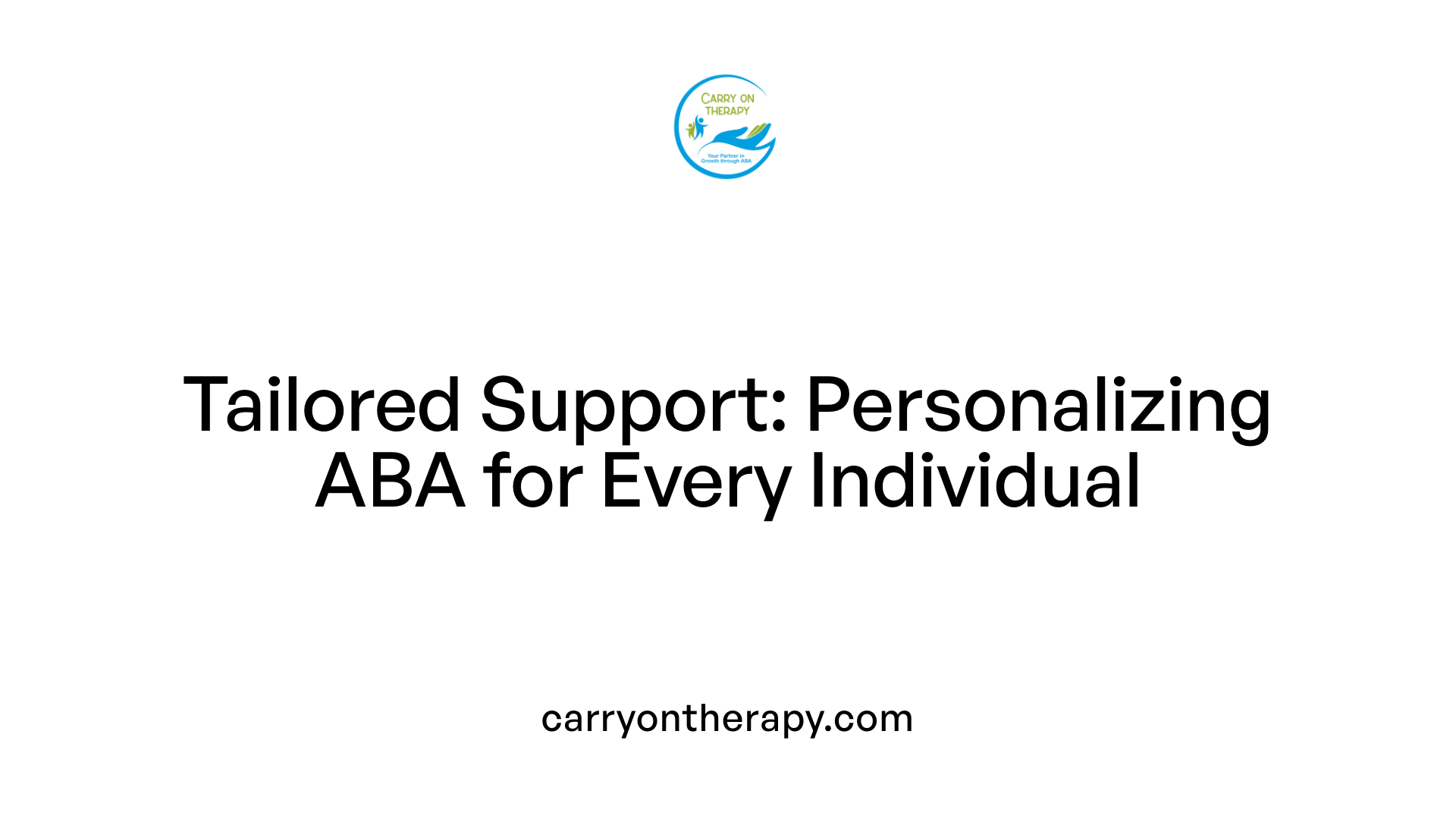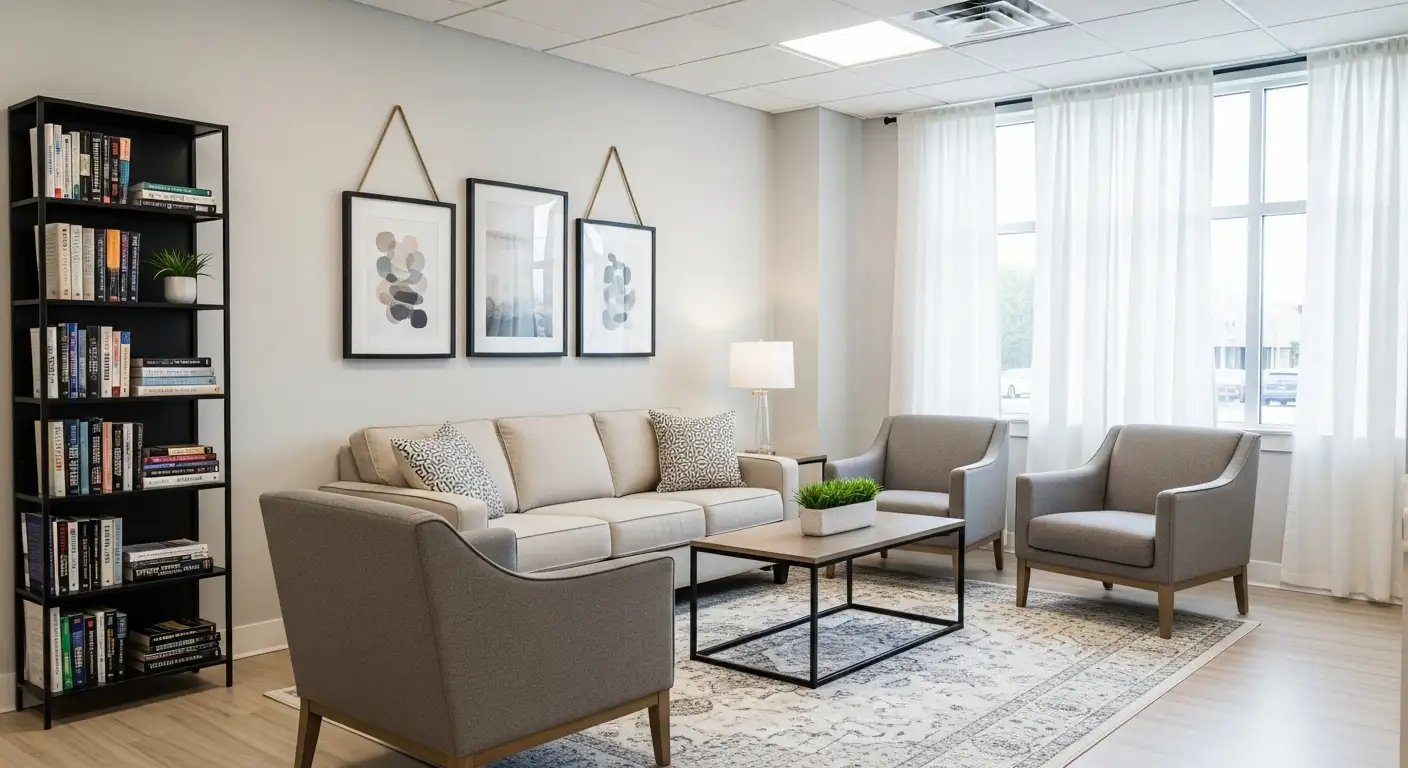Why In-Home Therapy is More than Just a Convenience
Unlocking Potential: Beyond Convenience in In-Home ABA Therapy

The Transformative Power of Therapy at Home
Applied Behavior Analysis (ABA) therapy has long been recognized as the gold standard in supporting individuals with autism spectrum disorder (ASD). While many might view in-home therapy primarily as a convenience, it carries profound advantages that extend well beyond ease and accessibility. This article explores why delivering ABA therapy in the home environment is an essential component in maximizing therapeutic outcomes and supporting families holistically.
Understanding Applied Behavior Analysis (ABA) Therapy

What is Applied Behavior Analysis (ABA) therapy?
Applied Behavior Analysis (ABA) therapy is a scientifically based approach focused on understanding and modifying behaviors by utilizing the principles of learning. It aims to increase helpful behaviors such as communication, social skills, and daily living skills, while decreasing harmful or interfering behaviors. Positive reinforcement, where desirable behaviors are rewarded to encourage their repetition, is a core strategy used in ABA.
Scientific Basis and Evidence Supporting ABA
ABA is recognized as an evidence-based, scientifically validated treatment, especially for individuals diagnosed with autism spectrum disorder (ASD). Research indicates that intensive and long-term ABA therapy leads to measurable improvements in intellectual functioning, language, daily living, and social skills. This recognition is supported by authoritative health and psychological organizations.
Techniques Used Within ABA
ABA employs various techniques to promote functional skills, including:
- Discrete Trial Training (DTT): Structured teaching using clear, repeated trials to encourage skill acquisition.
- Naturalistic Teaching: Learning occurs during everyday activities to encourage generalization of skills.
- Positive Reinforcement: Rewarding desirable behaviors to increase their occurrence.
Therapists use ongoing data collection and observation to monitor progress and make necessary adjustments.
Individualization of Therapy Programs
ABA programs are tailored to each individual's unique strengths, interests, and needs. Qualified behavior analysts (Board Certified Behavior Analysts, or BCBAs) conduct comprehensive assessments, design customized treatment plans, and regularly review progress to ensure the interventions align closely with the individual's developmental goals.
Settings Where ABA Can Be Delivered
ABA therapy is adaptable and can be delivered across various settings to maximize effectiveness, including:
- Home: Therapy sessions conducted in the individual's natural and comfortable environment.
- School: Integration of ABA strategies into educational settings.
- Community: Practicing social and life skills in real-world contexts.
This flexibility allows therapy to focus on relevant daily activities and promotes better generalization of skills.
| Aspect | Description | Importance |
|---|---|---|
| Definition | Science-based approach to behavior modification | Foundation for effective interventions |
| Core Techniques | Positive reinforcement, discrete trial training, naturalistic teaching | Drives behavior change and skill acquisition |
| Evidence Support | Validated by long-term research and health organizations | Ensures therapy reliability and effectiveness |
| Individualization | Customized plans based on assessments by BCBAs | Addresses unique needs and maximizes therapy gains |
| Delivery Settings | Home, school, and community environments | Supports skill application and generalization |
The Comprehensive Benefits of ABA for Individuals with Autism

How does ABA therapy benefit individuals with autism?
ABA therapy is a scientifically supported approach that significantly enhances communication, social abilities, and daily living skills for individuals with autism spectrum disorder (ASD). It works by focusing on each person's unique strengths and needs, delivering personalized interventions that promote positive behaviors and diminish harmful or disruptive actions.
Improvement in communication, social skills, and daily living
ABA helps build vital skills such as language development, social interaction, self-help, and academic abilities. Techniques used in therapy include positive reinforcement — rewarding desirable behaviors — and teaching in natural settings like the home to encourage practical learning. This natural environment teaching supports better retention and generalization of skills needed in everyday life.
Reduction of harmful behaviors
By understanding the triggers (antecedents) and consequences of behaviors, ABA therapists create individualized plans to reduce negative behaviors safely and effectively. This method decreases challenging behaviors and encourages more functional alternatives, thus improving the individual's ability to engage positively with family and peers.
Importance of individualized and intensive therapy
Personalized treatment plans are developed by Board Certified Behavior Analysts (BCBAs) who conduct thorough assessments to identify goals tailored to each individual's developmental level and interests. Research suggests that intensive ABA therapy — often 25-40 hours per week over a period of 1-3 years — yields measurable improvements in intellectual functioning, communication, and social skills.
Promoting independence and quality of life
ABA therapy aims beyond skills acquisition toward fostering independence. For example, adolescents and adults receive support to develop organization, self-care, and social competencies vital for daily functioning. Such guidance enhances quality of life, enabling individuals to participate more fully at home, school, and in their communities.
Use of positive reinforcement and adaptive techniques
Core to ABA is the use of positive reinforcement to motivate learning and encourage repetition of beneficial behaviors. Therapists employ adaptive strategies, including play-based and fun activities, real-time interventions in familiar settings, and family participation. These strategies increase engagement and facilitate faster progress, ensuring that skills gained are meaningful and sustainable.
The Roles and Expertise Behind ABA Therapy Delivery

Who typically provides ABA therapy services?
ABA therapy is delivered by a team of trained professionals, primarily including Board Certified Behavior Analysts (BCBAs), behavior technicians (BTs), and registered behavior technicians (RBTs). BCBAs hold advanced credentials and are responsible for conducting assessments, developing customized treatment plans, and supervising therapy implementation. Behavior technicians and RBTs work directly with individuals, applying ABA techniques during therapy sessions.
Training and certification standards
Professionals in ABA therapy must undergo rigorous training and adhere to certification standards to ensure effective and ethical treatment. BCBAs complete graduate-level education and pass a comprehensive certification exam, while RBTs receive specialized training and must demonstrate competency through credentials. These standards help maintain high-quality care and consistent application of evidence-based practices.
Collaborative interdisciplinary approaches
ABA providers often collaborate with other specialists such as speech-language pathologists, occupational therapists, and psychologists. This teamwork ensures a comprehensive approach to meet the complex needs of individuals with autism, addressing communication, social skills, behavior, and related developmental areas.
Organizations providing high-quality ABA services
Reputable organizations specializing in autism support employ certified BCBAs and therapy technicians to deliver high-quality ABA therapy. For example, Constellation Health Services offers in-home ABA therapy with trained professionals who provide compassionate, individualized care. These organizations emphasize ongoing supervision, data-driven progress monitoring, and family involvement.
In-home therapy provider roles
In in-home ABA therapy, qualified therapists implement treatment plans tailored to the child's natural environment. They conduct structured sessions focused on daily routines and real-life learning opportunities. Providers also train parents and caregivers, empowering families to reinforce skills outside therapy. This approach enhances comfort, convenience, and promotes skill generalization in the child's daily life.
The combination of trained professionals, strict certification standards, interdisciplinary collaboration, and family-centered in-home delivery ensures that individuals with autism receive effective and compassionate ABA therapy tailored to their unique needs.
Why In-Home ABA Therapy is More Than Convenience: Comfort and Natural Environment
Why is the home setting important for comfort and familiarity in ABA therapy?
Delivering ABA therapy within the home offers a uniquely comforting and familiar setting for individuals with autism. This environment reduces anxiety and stress that can be triggered by unfamiliar clinical settings. Children and adults are able to engage more openly and confidently where they feel safest, resulting in better participation and receptiveness during therapy sessions.
How does using natural environments support teaching functional skills?
Using the natural home environment allows therapists to focus on real-life learning activities that are meaningful in the individual's everyday context. For example, practicing communication skills during family mealtimes or teaching self-help tasks like dressing and hygiene becomes more relevant and practical. This context-based learning encourages the acquisition of life skills tailored to actual daily routines.
What role does the home setting play in faster generalization and retention of skills?
In-home ABA therapy supports faster generalization because behaviors are practiced where they will naturally be used. When children learn new skills in their typical environments, transferring these capabilities to daily life is more straightforward and durable. This reduces the disconnect that sometimes happens when therapy occurs in artificial or clinical contexts.
How does in-home therapy reduce behavioral challenges linked to unfamiliar environments?
Many behavioral challenges in autism arise from discomfort or overstimulation in new or clinical settings. The home setting limits exposure to such stressors, helping stabilize behavior. Real-time observation in this comfortable space also allows therapists to immediately address and modify interventions tailored to specific behaviors as they naturally arise.
How does real-time observation and intervention in the home improve therapy effectiveness?
Therapists working in the home gain direct insights into the individual's daily life, enabling them to identify triggers and reinforce positive behaviors within the context they occur. This immediate application and adjustment increase therapy effectiveness by ensuring interventions are both relevant and timely, fostering meaningful progress.
Overall, in-home ABA therapy’s grounding in familiar surroundings is more than convenient — it creates an optimal setting for individualized, functional skill development that resonates with daily living and supports long-term growth.
Family Engagement and Empowerment in In-Home ABA Therapy

How is parent and caregiver training incorporated into in-home ABA therapy?
Parent and caregiver training is fundamental to in-home ABA therapy. Therapists actively involve family members by teaching them ABA techniques during sessions. This training empowers parents and caregivers to become effective partners in their child's development, equipping them with strategies to support progress beyond therapy hours.
How does active participation and observation encourage family involvement?
In-home therapy sessions encourage parents to observe and actively participate. This hands-on involvement helps families better understand their child's needs and behaviors. Watching therapy in action also boosts confidence in applying behavioral strategies at home, fostering consistency and reinforcing positive changes.
In what ways does building family competence in ABA techniques benefit therapy outcomes?
When families learn and apply ABA principles, it enhances the continuity of care. Parents skilled in these methods can reinforce skills throughout daily routines, creating natural learning opportunities. This leads to faster generalization and retention of targeted behaviors, ultimately improving therapy effectiveness.
How are skills reinforced outside of therapy sessions?
Therapists provide guidance on how to integrate learned behaviors into everyday activities such as mealtime, play, and self-care. Families use familiar reinforcers and routines, which support maintaining and expanding their child's skills. This ongoing reinforcement ensures that progress continues between sessions and across environments.
How does in-home ABA therapy support overall family wellbeing and reduce stress?
In-home therapy reduces logistical challenges, like transportation, and brings interventions into a comfortable, familiar setting. Training parents to manage behaviors and recognize developmental milestones lessens anxiety and stress. Moreover, the collaborative approach strengthens family confidence, improves communication, and creates a more supportive home environment.
Through these multiple avenues, family engagement in in-home ABA therapy fosters empowerment, promotes skill generalization, and enhances the child's developmental progress in a nurturing, real-world context.
Personalization, Flexibility, and Holistic Support Through In-Home Therapy

How are treatment plans tailored based on assessments?
In-home ABA therapy begins with comprehensive evaluations conducted by skilled therapists supervised by Board Certified Behavior Analysts (BCBAs). These assessments focus on individual strengths, interests, and challenges to design personalized treatment plans. Goals encompass a broad spectrum—from communication and social skills to feeding and self-help—ensuring therapy meets unique developmental needs.
How does flexible scheduling benefit families?
Flexible session scheduling is a major advantage of in-home therapy. Families can arrange sessions around busy routines without the added stress of transportation or clinic appointments. This flexibility reduces logistical barriers and allows for consistent therapy engagement, helping families integrate treatment smoothly into daily life.
What developmental skills does in-home ABA address?
In-home ABA therapy targets a wide variety of skills, including:
- Language and communication: Enhancing expressive and receptive skills.
- Social skills: Facilitating positive interactions.
- Feeding and self-help: Teaching independence in daily tasks like dressing and hygiene.
- Foundational and academic skills: Supporting abilities vital for learning and everyday functioning.
This comprehensive approach ensures that therapy addresses the child’s holistic developmental profile.
How is in-home ABA integrated with other service providers?
Therapists delivering in-home ABA coordinate with schools, healthcare providers, and other specialists. This collaboration ensures consistency in strategies across settings, maximizing the effectiveness of interventions and providing unified support for the individual’s progress.
What are the cost-effective and logistical advantages of in-home therapy?
In-home ABA minimizes transportation costs and reduces exposure to illness by limiting external contacts. Tailored treatment in a natural environment makes learning more efficient, which can shorten needed therapy durations. Additionally, personalized attention and family involvement often lead to faster progress, representing both a practical and economical benefit for families.
Clinical Quality and Oversight in In-Home ABA Services
How Does Supervision by Board Certified Behavior Analysts (BCBAs) Enhance ABA Therapy?
Board Certified Behavior Analysts (BCBAs) play a pivotal role in ensuring that in-home ABA therapy maintains rigorous clinical standards. They oversee therapists delivering services to guarantee treatment fidelity, design individualized programs tailored to each child’s unique needs, and provide continuous training. Their expertise helps align intervention strategies with evidence-based practices, ensuring that therapy is both effective and grounded in the latest behavioral research.
What Role Does Data Collection and Progress Monitoring Serve?
ABA therapy involves systematic, ongoing data collection to track behavioral changes and skill acquisition accurately. Therapists collect detailed information during sessions, which BCBAs analyze regularly to assess progress toward treatment goals. This continuous monitoring enables informed decisions about which strategies to maintain, modify, or replace, ensuring that the intervention remains responsive and effective over time.
How Are Evidence-Based Programming and Adjustments Implemented?
Programming in ABA is based on scientifically validated principles including positive reinforcement and behavior analysis techniques. BCBAs design treatment plans that incorporate these methods and adjust them based on collected data, client responsiveness, and evolving needs. This adaptive approach helps optimize therapy outcomes and addresses challenges as they arise.
How Is Consistent and High-Quality Care Ensured?
Consistency in therapy is fostered through structured sessions, standardized procedures, and skilled therapists who receive BCBA supervision. One-on-one attention during in-home sessions facilitates tailored interventions. Additionally, therapists coordinate with caregivers to generalize skills across settings, enhancing continuity. The close supervision and adherence to best practices help maintain exemplary quality throughout treatment.
How Does Coordination with Schools and Other Providers Work?
Therapists collaborate closely with educational institutions and additional service providers to promote a unified approach. This collaboration allows consistent implementation of behavioral strategies across different environments, reinforcing skill generalization and addressing any discrepancies. Clear communication channels between home and school specialists ensure that the child’s developmental needs are comprehensively supported.
Common ABA Techniques Utilized
- Positive Reinforcement: Rewarding desirable behaviors to increase their frequency.
- Discrete Trial Training (DTT): Teaching specific skills through structured, repeated trials.
- Modeling: Demonstrating behaviors for imitation.
- Prompting and Fading: Guiding responses gradually toward independence.
- Behavior Chaining: Breaking complex tasks into smaller parts.
- Extinction: Withholding reinforcement to reduce unwanted behaviors.
- Supplemental strategies: Redirection, script fading, behavioral contracts, and functional communication training.
This multi-layered clinical oversight and adherence to evidence-based practices make in-home ABA therapy a reliable and effective intervention for individuals with autism spectrum disorder.
In-Home Therapy: A Catalyst for Meaningful Development
Providing ABA therapy in the home transcends the simple benefit of convenience, embedding interventions within the context where individuals with autism live and learn every day. This approach not only boosts engagement and skill acquisition but also empowers families as active collaborators in therapy. The personalized, flexible, and expertly supervised nature of in-home ABA therapy supports comprehensive development—addressing communication, socialization, self-help, and beyond—within a trusted environment. As research and experience continually underscore, in-home therapy is a powerful catalyst for fostering independence and improving quality of life, proving that its value reaches far beyond mere convenience.
References
- Why Home-based ABA Therapy Is A Gamechanger
- The Advantages of In-Home Sessions with a Private ABA ...
- The Complete Guide to ABA In-Home Therapy: Benefits ...
- Advantages of ABA Therapy at Home
- Applied Behavior Analysis (ABA)
- Benefits of ABA Therapy at Home and What to Expect
- Applied Behavior Analysis (ABA)
- The Top 10 Reasons Children With Autism Deserve ABA







